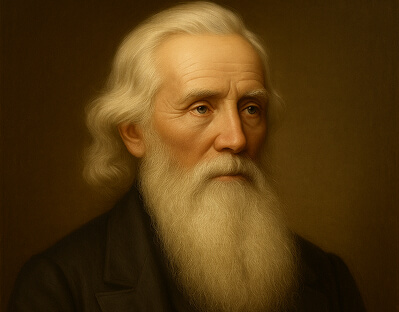Early Life and Calling
John Gibson Paton (1824–1907) was born in Scotland and experienced a powerful early conviction to share the gospel with the unreached. His theological training and urban ministry in Glasgow prepared him for cross-cultural mission work. Ultimately, Paton entered newly dangerous territory in the New Hebrides for a cause he believed transcended personal comfort and safety.
The Mission to Tanna
In 1858, John and his first wife Mary Ann landed on Tanna, arriving at Port Resolution amid hostility and cannibal practices by local tribes. Sorrow struck swiftly: Mary Ann died in early 1859, followed by their infant son just weeks later, both victims of fever. Displaying remarkable resolve, Paton buried them near his mission house and guarded their graves, even as threats to his own life increased.
Perseverance in Danger and Faith
Despite enduring theft, threats, and violence, Paton remained steadfast. Writing later, he said: “I left all in His hands and felt immortal till my work was done.” After four perilous years marked by episodes of near-altars and spiritual trial, he evacuated Tanna in 1862.
Fruitful Years on Aniwa
In 1866, Paton returned with his second wife, Margaret Whitecross, and established a mission on nearby Aniwa Island. Over the next three decades, he and Margaret saw dramatic transformation: learning the language, reducing it to writing, translating Scripture, educating women in literacy and trades, building schools, orphanages, and introducing small industries. Within fifteen years, the native church had grown strong enough that Paton would later say, “I claimed Aniwa for Jesus, and by the grace of God Aniwa now worships at the Savior’s feet.” (https://www.desiringgod.org/messages/you-will-be-eaten-by-cannibals-lessons-from-the-life-of-john-g-paton)
Notable practical contributions included digging a fresh-water well—dubbed “Jehovah’s Well”—that surprised locals and symbolized God’s provision. This event played a key role in spiritual receptivity among islanders. The New Testament in the Aniwan language was published in 1899, completing years of translation work.
Advocacy and Ongoing Mission Work
Paton leveraged his influence to oppose blackbirding—the coercive recruitment of Pacific Islanders into forced labor—and to seek British protection over the islands. He traveled widely through Scotland, Australia, Canada, and New Zealand, raising support, recruiting missionaries, and funding mission ships like the Dayspring.
Faith Under Fire: The Power of Trust
Paton’s life shines as a portrait of sustained faith. He endured extreme danger, the loss of loved ones, and cultural opposition—not out of fearlessness, but out of unwavering trust in God’s sovereignty. His repeated affirmation, “Where there is faith, there is no fear,” underscores a theology that rooted courage in divine faithfulness.
Legacy and Relevance Today
John Paton’s legacy is multifaceted—evangelism, education, translation, indigenous leadership, and social justice. His influence shaped not only Aniwa’s spirituality, but also helped spark Christianity across Vanuatu and beyond. His life continues to challenge modern churches to embrace mission as cross-cultural, sacrificial, and holistic.
An Invitation to Learn More
Readers inspired by Paton’s sacrifice and vision can explore his autobiography (Thirty Years Among South Sea Cannibals), Margaret Paton’s letters, or modern biographies and mission histories chronicling South Pacific transformations.


0 Comments